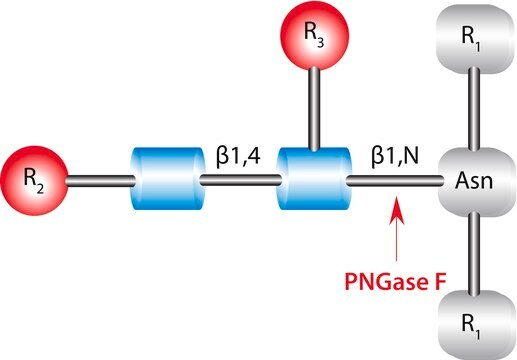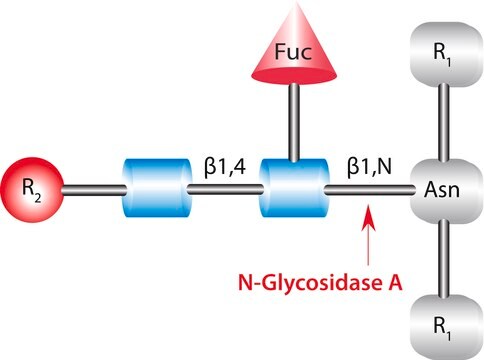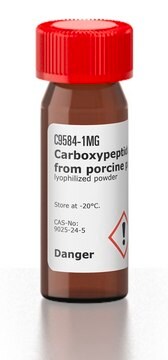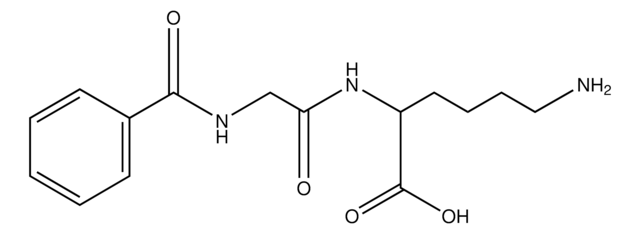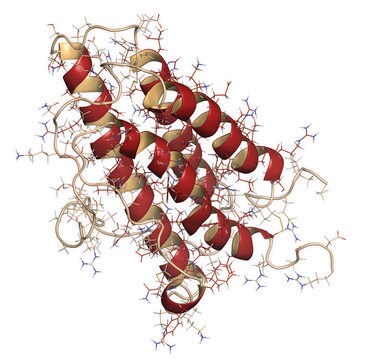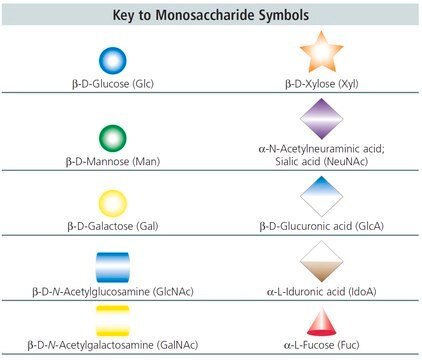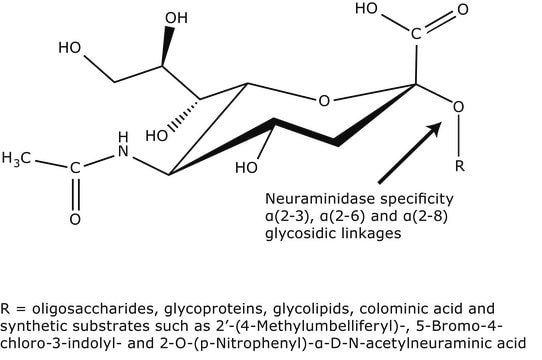P9120
PNGase F from Elizabethkingia meningoseptica
recombinant, expressed in E. coli, set of 100 units nanomolar unit
Sinónimos:
PNGase F
About This Item
Productos recomendados
recombinant
expressed in E. coli
Quality Level
conjugate
(N-linked)
specific activity
≥10 units/mg protein
mol wt
36 kDa
packaging
set of 100 units nanomolar unit
shipped in
wet ice
storage temp.
2-8°C
¿Está buscando productos similares? Visita Guía de comparación de productos
Application
- of recombinant soybean agglutinin (rSBA) in Nicotiana benthamiana (NbrSBA) and Solanum tuberosum (StrSBA)
- of frontal cortical lysate to verify the glycosylation profile of β-secretase (BACE proteins)
- of cell lysate for evaluating the siRNA silencing of cellular prion protein (PrPc) post transfection
Biochem/physiol Actions
Packaging
Unit Definition
Legal Information
signalword
Danger
Hazard Classifications
Acute Tox. 3 Dermal - Acute Tox. 4 Oral - Aquatic Acute 1 - Aquatic Chronic 1 - Eye Dam. 1 - Repr. 2 - Resp. Sens. 1 - Skin Irrit. 2 - Skin Sens. 1
Storage Class
6.1C - Combustible acute toxic Cat.3 / toxic compounds or compounds which causing chronic effects
flash_point_f
Not applicable
flash_point_c
Not applicable
Certificados de análisis (COA)
Busque Certificados de análisis (COA) introduciendo el número de lote del producto. Los números de lote se encuentran en la etiqueta del producto después de las palabras «Lot» o «Batch»
¿Ya tiene este producto?
Encuentre la documentación para los productos que ha comprado recientemente en la Biblioteca de documentos.
Los clientes también vieron
Artículos
N-Linked Glycan Strategies; Sigma-Aldrich.com
Nuestro equipo de científicos tiene experiencia en todas las áreas de investigación: Ciencias de la vida, Ciencia de los materiales, Síntesis química, Cromatografía, Analítica y muchas otras.
Póngase en contacto con el Servicio técnico